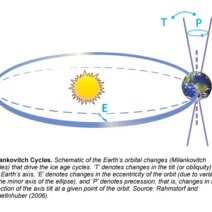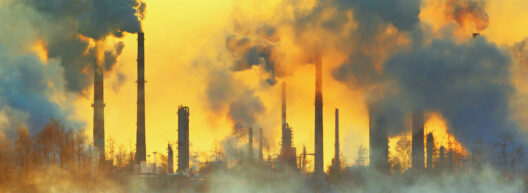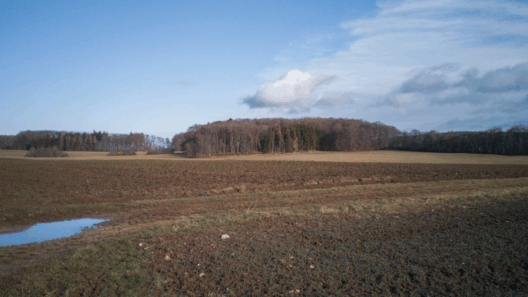As the discourse surrounding climate change intensifies, an increasingly pressing question emerges: Does climate change trigger hurricanes? This inquiry, laden with scientific nuance and societal implications, compels us to traverse the intricate interplay between anthropogenic influences and natural phenomena. To navigate this labyrinthine topic, one must dissect the facts while acknowledging the pervasive currents of fear that often color public perception.
First, it is essential to establish the foundational understanding of hurricanes. These ferocious storms are born from a confluence of warm ocean waters, moist air, and specific atmospheric conditions. Typically, hurricanes thrive in tropical regions, where sea surface temperatures exceed 26.5 degrees Celsius (about 80 degrees Fahrenheit). The vital question then emerges: how does climate change, characterized by rising global temperatures and shifting weather patterns, influence this development process?
The unequivocal rise in global temperatures has led to an increase in ocean heat content. This warming provides the necessary fuel for hurricanes, amplifying their intensity and longevity. Research suggests that as oceans warm, hurricanes are likely to become more potent, spawning storms of greater magnitude. For instance, Category 3 hurricanes and above are projected to increase in frequency due to elevated sea temperatures—a phenomenon that compels us to reconsider the relationship between climate change and hurricane dynamics.
However, the correlation between climate change and hurricane frequency is perplexing. While the intensity of storms is anticipated to rise, studies indicate that the overall number of hurricanes may not experience a significant escalation. This divergence embodies a critical distinction: while climate change augments the strength of existing hurricanes, it does not necessarily correlate with an increase in their numbers. Herein lies the fertile ground for fear; the potential for a stronger, more destructive storm should not evoke a sense of helplessness, but rather a motivation for preparedness and resilience.
One must also confront the role of climate change in altering hurricane pathways. Recent evidence suggests that shifting ocean currents—resulting from climate change—can redirect storm trajectories, potentially endangering areas previously considered less vulnerable. This unpredictability fosters anxiety among populations in these newly vulnerable locales. Herein lies a paradox: while knowledge of climate influences on hurricanes can impart a sense of urgency, it is also essential to foster a spirit of proactive adaptation rather than retreating into despair.
Within the narrative of hurricanes and climate change, the phenomenon of “hurricane rapid intensification” warrants scrutiny. This term describes the swift escalation of a storm’s strength, often occurring within a mere 24 hours. Such intensification has been observed more frequently in recent years and is thought to be exacerbated by climate change. The increase in moisture and energy in a warming atmosphere may facilitate these sudden surges in power, creating an urgent need for enhanced forecasting and readiness strategies.
Moreover, the interplay between hurricanes and rising sea levels adds another layer of complexity. Climate change contributes to accelerated melting of polar ice and thermal expansion of seawater, resulting in higher sea levels. This elevation exacerbates the impacts of storm surges, leading to more severe flooding and greater property damage in coastal regions. It underscores the profound interconnectivity of climate systems, challenging us to acknowledge that hurricanes cannot be viewed in isolation from the broader context of climate change.
Addressing the psychological aspect of climate change and hurricanes, fear-driven narratives are all too common. sensationalized predictions often dominate popular media, instigating panic rather than constructive dialogue. This atmosphere cultivates a sense of helplessness among communities, which can stifle proactive behaviors. It is paramount for discourse surrounding this topic to evolve from fear to informed activism. Understanding the science behind these storms empowers communities to engage with the necessary adaptation strategies, rather than succumbing to trepidation.
Public policy must also reflect an understanding of the intricate dance between climate change and hurricanes. Policymakers are tasked with creating frameworks that prioritize resilience and proactive infrastructure planning in hurricane-prone regions. This includes investing in sustainable practices that minimize climate change impacts, such as transitioning to renewable energy sources, enhancing coastal defenses, and adopting land-use policies that mitigate flooding risks.
Enhancing community resilience includes fostering educational initiatives that equip residents with knowledge about hurricane preparedness and response. Enhanced awareness can stoke a culture of preparedness, transforming anxiety into action. Furthermore, empowering vulnerable populations through accessible resources and support facilitates equitable participation in resilience-building efforts.
As we continue to grapple with the multifaceted relationship between climate change and hurricanes, one must persistently question existing paradigms. While statistical models project certain alarming trends, the fluctuating nature of our climate necessitates a nuanced understanding that embraces uncertainty. We must challenge reductive narratives that simplify complex interactions to better navigate future challenges. Ultimately, the trajectory of climate change remains within our grasp; the more we engage and educate, the more fortified we become against the storms on the horizon.
In conclusion, climate change does influence hurricanes, primarily in terms of intensity and potential impacts. However, it is critical to transcend fear-based rhetoric and foster a spirit of resilience and preparedness. By doing so, we not only equip ourselves to face natural disasters but also take pivotal steps toward curbing climate change itself, thereby creating a more sustainable and secure future.





